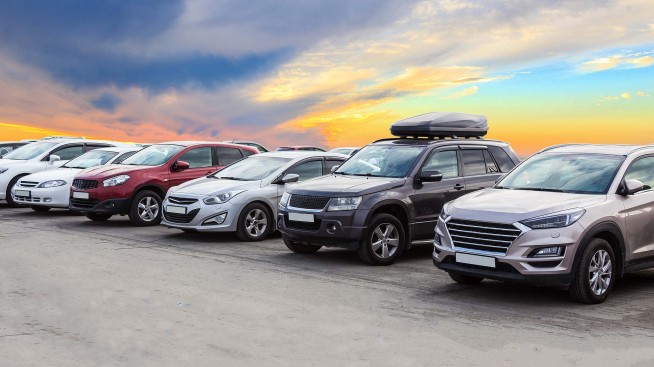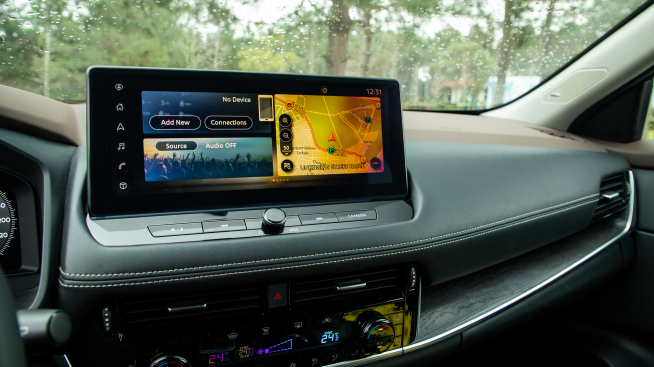What car should I buy?

Today’s car market features thousands of options to choose from, which means you’re very likely to find a car that has your desired features. On the other hand, that much choice can also become potentially overwhelming if you’re wondering “What car should I buy?”. Here are a few questions to help you start narrowing it down.
What type of car suits your needs?
Different drivers have different needs and, therefore, need different car models. A zippy two-seater might be perfect for a free-spirited professional who enjoys cruising the highway on weekends, but it may not offer much utility to a family of five. Commuters might value fuel economy while others might prioritize safety features. Evaluating which type of car will suit your needs can go a long way toward narrowing down your choices. Below are a few of the major car body styles to consider:
Sedans
Sedans are one of the most traditional vehicle types, offering a decent amount of cabin space and, typically, a separate trunk compartment.
Sports cars and coupes
Smaller and more performance-focused than sedans, sports cars and coupes offer an exciting driving experience.
Convertibles
Convertibles give owners the option of opening the roof to give you that “wind-in-your-hair" thrill (pro-tip: keep a comb in the glove compartment).
SUVs
SUV stands for “sport utility vehicle” and encompasses a broad range of vehicles in a variety of sizes. At its core, an SUV provides ample space and performance like a truck, while handing more like a sedan.
Vans and minivans
Vans offer a great deal of functionality and space, often useful for commercial applications and transporting cargo. Minivans are passenger cars with a greater emphasis on seating and storage that makes them a popular choice for families.
Trucks
Trucks are often used for commercial purposes but are equally popular among consumers who want a lot of space, towing capacity and the possibility of going off-roading.
What’s your budget?
Another important question is what kind of budget you’ll be working with. It’s best to budget wisely to ensure that your car payments are manageable and can be paid on time to avoid any negative impacts to your credit.
One way you can do this is to get your financing in order before you even start shopping. While addressing your credit needs after you’ve chosen a car is a common approach, you don’t necessarily have to wait that long. Getting prequalified for your loan can help you at least have a reasonable estimate of what kind of loan terms you’ll likely qualify for including an estimated monthly payment.
Once you’ve figured out what kind of loan you’ll get and an estimate of your monthly payment, it may help to also factor other costs of ownership into your budget. These include:
- Gasoline
- Maintenance
- Repairs
- Insurance
- Parking and tolls
Keeping these costs in mind along with your monthly car payment can help ensure your car budget doesn’t accidentally throw off your other finances. This is especially important to keep in mind if you’re a first-time car buyer who isn’t used to budgeting for cars.
Buying vs. leasing
It may also be prudent to quickly discuss buying a car vs. leasing it. Monthly lease payments may be lower than monthly car payments, since the former is based on how much the car will depreciate during your lease rather than the full purchase price. However, you may also be subject to additional fees at the end of your lease for things like excess mileage or wear and use. Buying a car outright may involve a higher payment, but it allows you to exercise the full rights of ownership, letting you drive and modify the car as you see fit (with a few exceptions if you’re financing). And once the financing is paid off, you can keep on driving without further payments, instead of returning a leased car, or deciding what to do next.
Are you buying new or used?
This is a great question to ask yourself, because there are important pros and cons to buying a new vs. used car.
Pros of buying a new car
Pros of buying a new car include:
- Newer technology
- Greater reliability that the car is problem-free
- Comes with a warranty
- More financing options are available
Cons of buying a new car
Cons of buying a new car include:
- Higher price tag
- More sales taxes and premiums
- Greater rate of depreciation
Pros of buying a used car
Pros of buying a used car include:
- Lower cost
- Reduced rate of depreciation
Cons of buying a used car
Cons of buying a used car include:
- Potentially unknown vehicle history
- Car has experienced more wear and tear
- Increased maintenance costs
What type of engine and drivetrain would you prefer?
Your car’s engine and drivetrain will make a big impact on the kind of driving experience you have, and there are several of each to choose from.
Engine types
The engine is the heart of your car, and it can make a big difference on your car's performance and mileage. The main types of engines available today are:
Gasoline – Gasoline engines have long been the “standard” engine in most cars. Their wide availability means they’re typically less costly than alternatives.
Diesel – Diesel engines are also internal combustion engines (ICEs) like gasoline engines but run on a different fuel (diesel) and slightly different engine design. This allows diesel engines to put out more torque, which makes them well-suited for heavy duty work like trucking and towing.
Electric – Electric vehicles (EVs) are an increasingly popular alternative to a more traditional ICE car. EVs require battery power from a 110 or 240-volt outlet at home or from a higher-powered public charging station. While they cost more up-front, they can offer significant long-term savings in fuel costs.
Hybrid – Hybrid cars come in many varieties but essentially offer a bit of both worlds — they primarily use electric power but have a combustion engine to fall back on. Some hybrids may use electricity only for supplemental power while others might be able to plug in and drive on electric power much like an EV.
Drivetrain types
Your car’s drivetrain is what takes the power from your engine and brings it to your wheels. There are four main types of drivetrains:
Rear-wheel drive – Rear-wheel drive (RWD) was the first drivetrain used in cars, and transfers engine power to the rear wheels.
Front-wheel drive – Front-wheel drive (FWD) transfers engine power directly down to the front wheels. This results in a smaller, lighter drivetrain, which improves fuel economy.
Four-wheel drive – Four-wheel drive (4WD) transfers power to all four wheels at once, improving traction and handling on rough terrain.
All-wheel drive – All-wheel drive (AWD) also transfers power to all four wheels but was designed for improved traction on pavement instead.
What additional features would you like?
Once you’ve established which essentials you need in a car, it then may be time to start thinking about any extras you might want. These kinds of add-ons can get expensive quickly, but they can also be nice to have if you’ve got room to spare in your budget. Commonly added extras may include (but are by no means limited to):
- Built-in Wi-Fi
- Bluetooth connectivity
- Passenger entertainment systems
- Sun or moonroof
- Heated seats
- Roof racks for added storage
- Individual climate control zones
- Extra safety upgrades
- Camera systems
In summary
As you see, asking “What car should I buy?” is a deceptively simple question. The “right” answer is highly personal, based on a variety of factors unique to each buyer. It may be more helpful instead to start asking specific questions about your preferences and budget. These may help you whittle down the choices until you find the one that ticks most (or maybe all) of your boxes.



